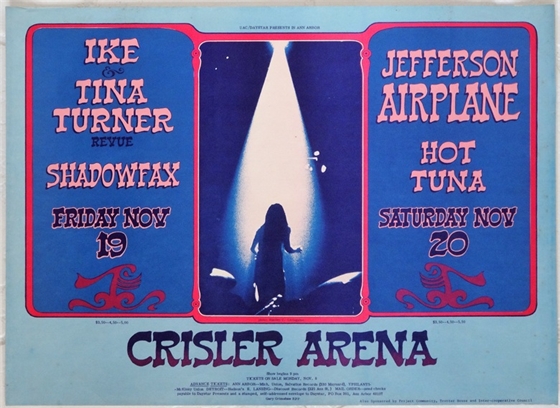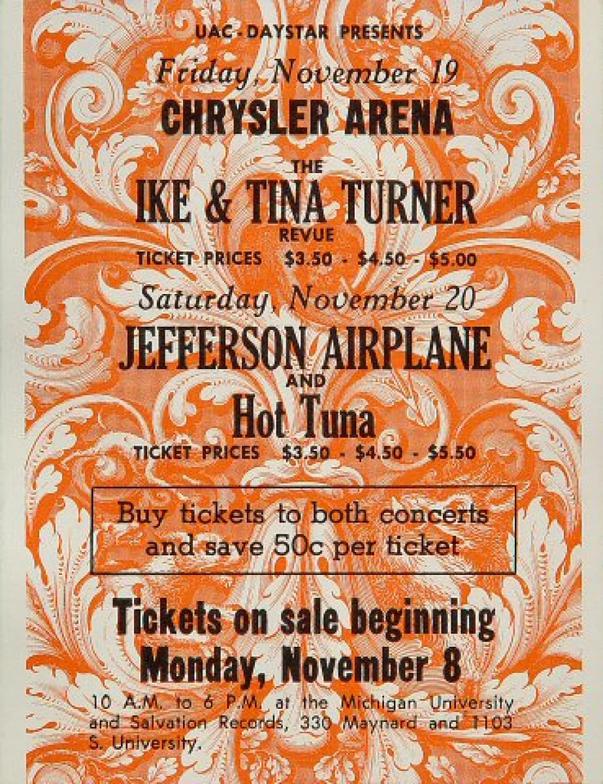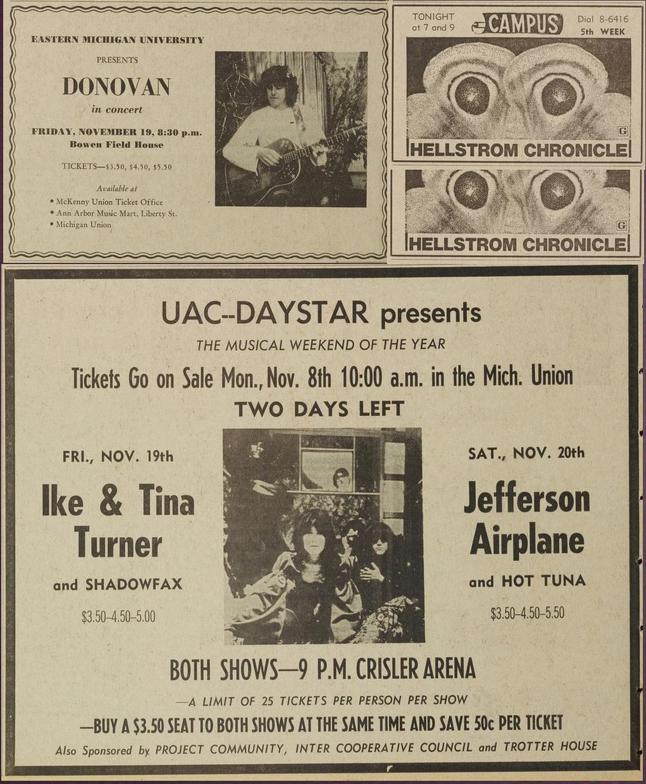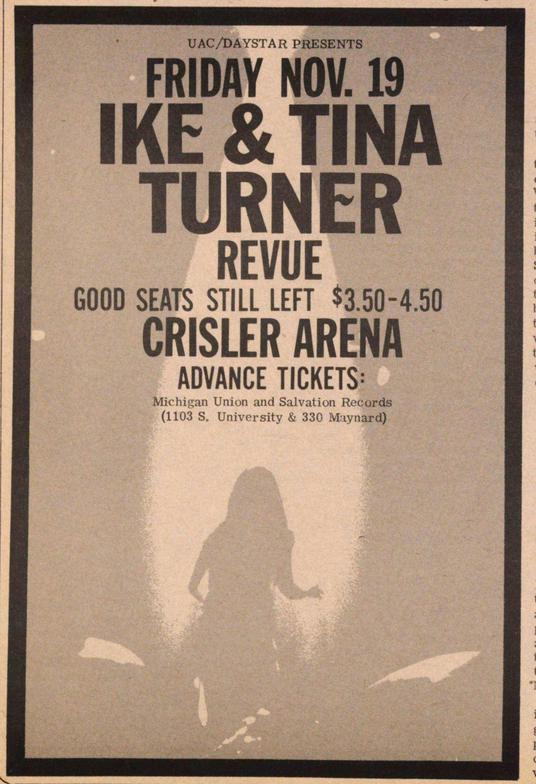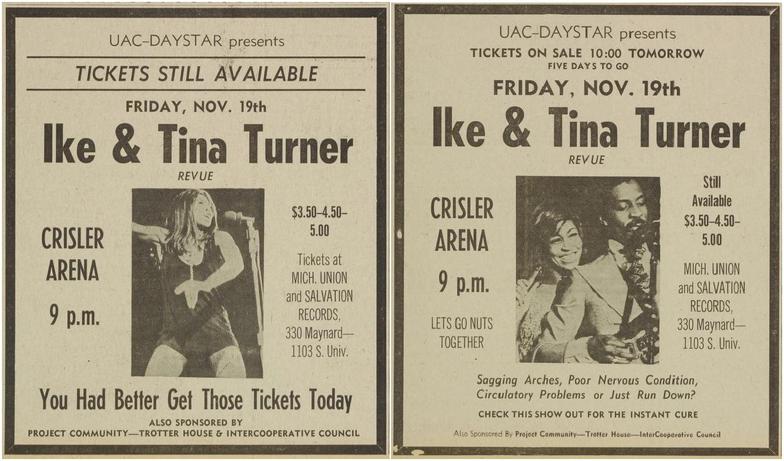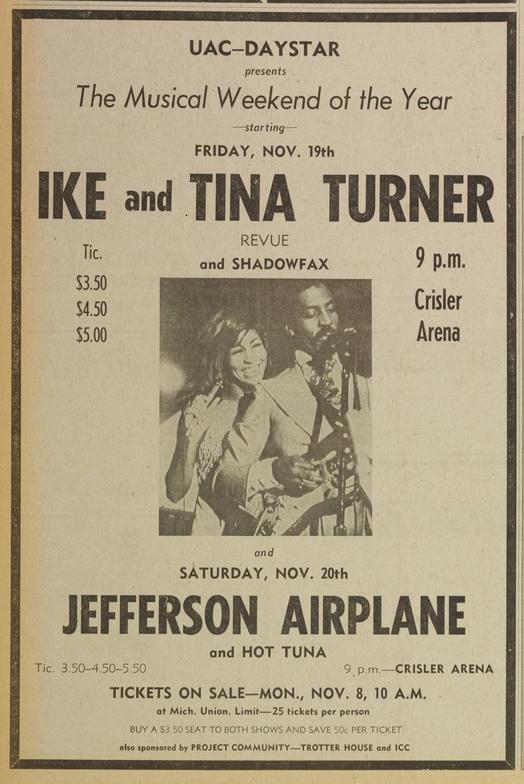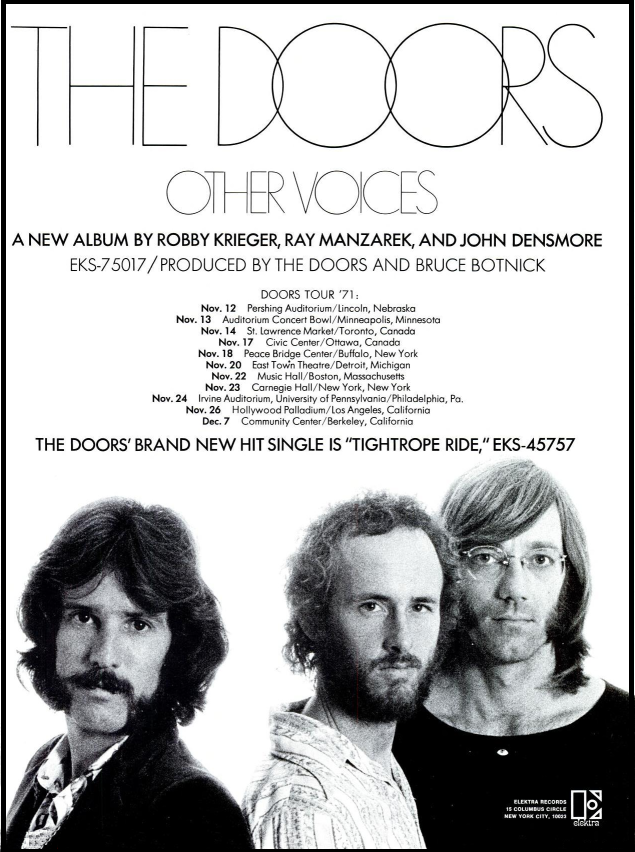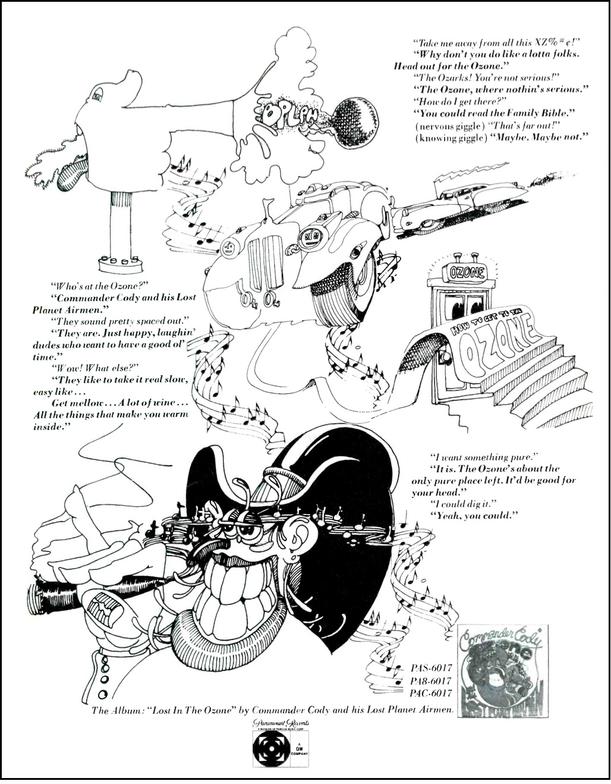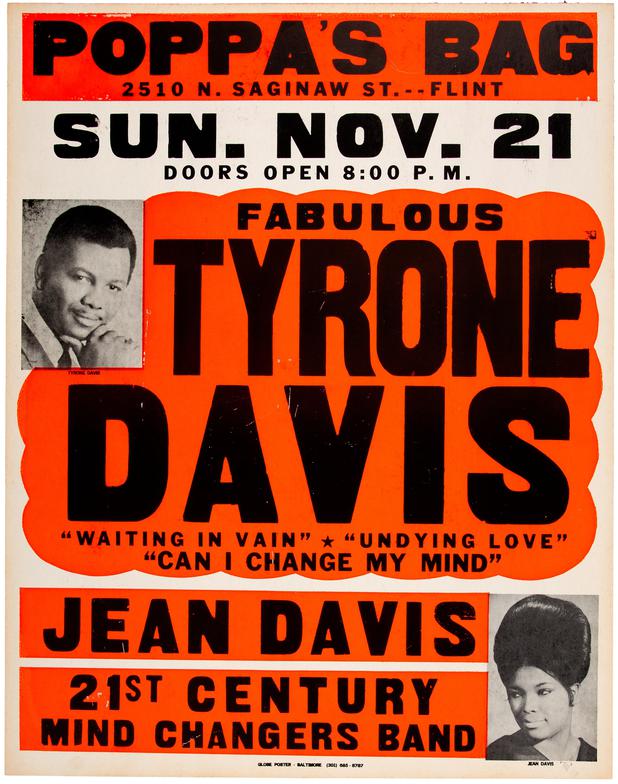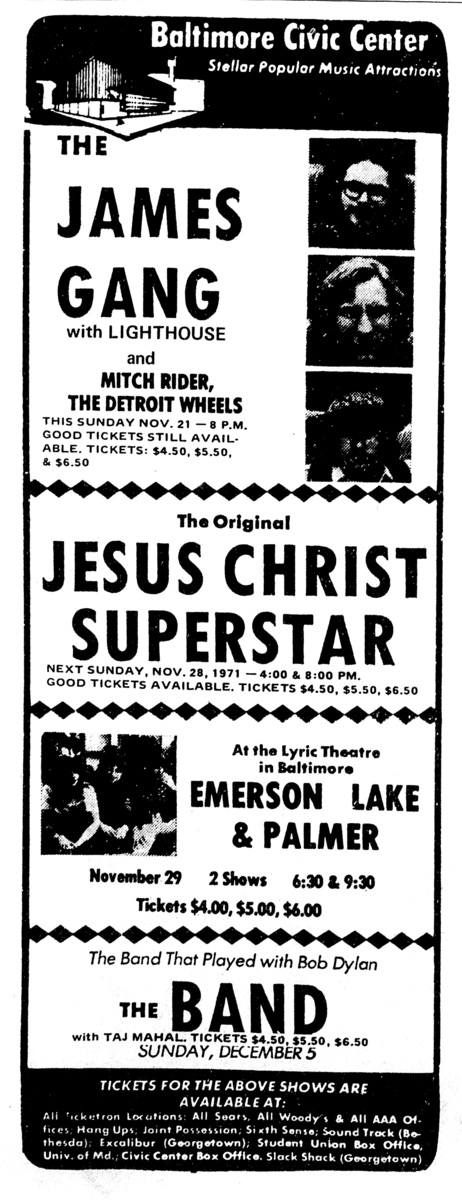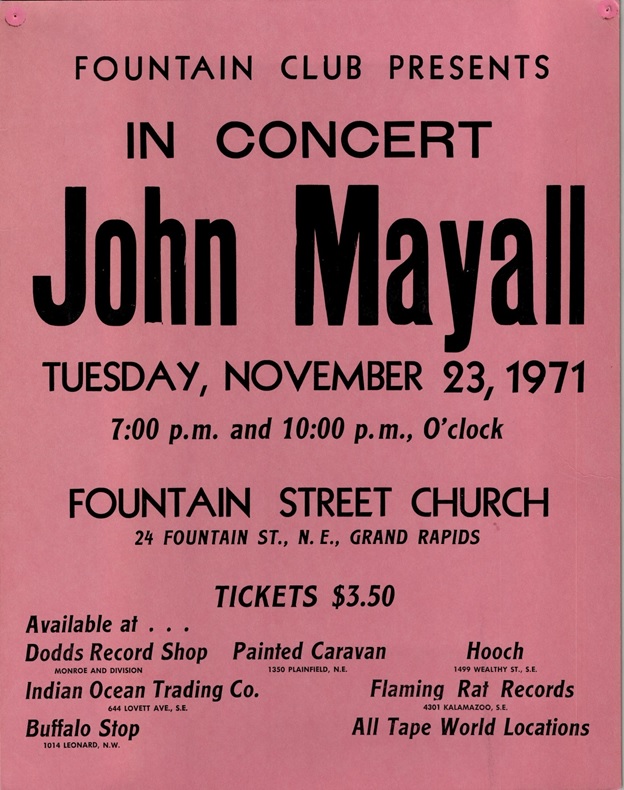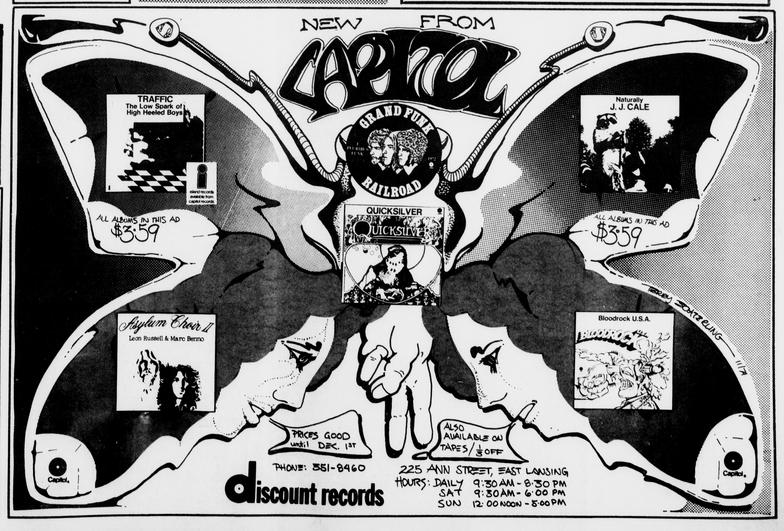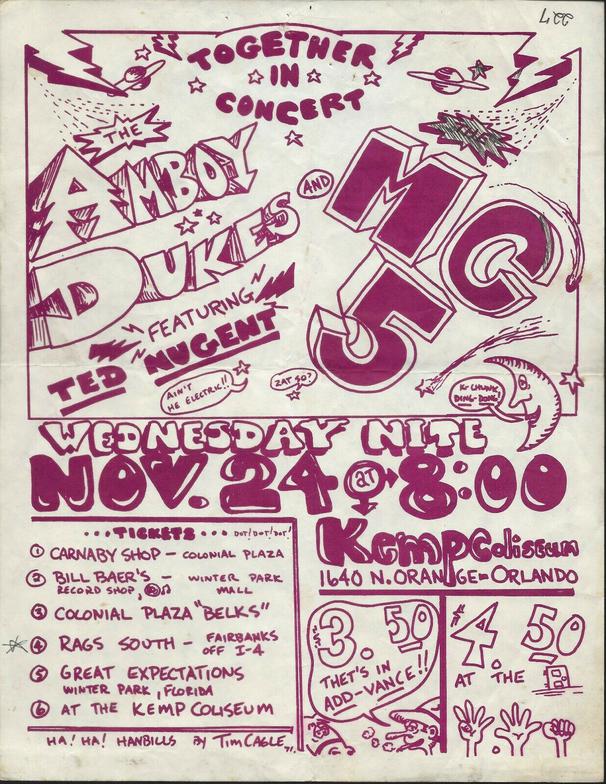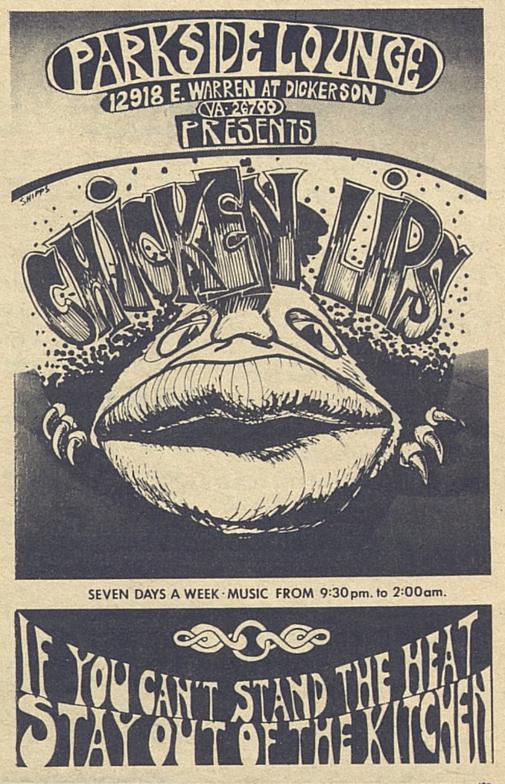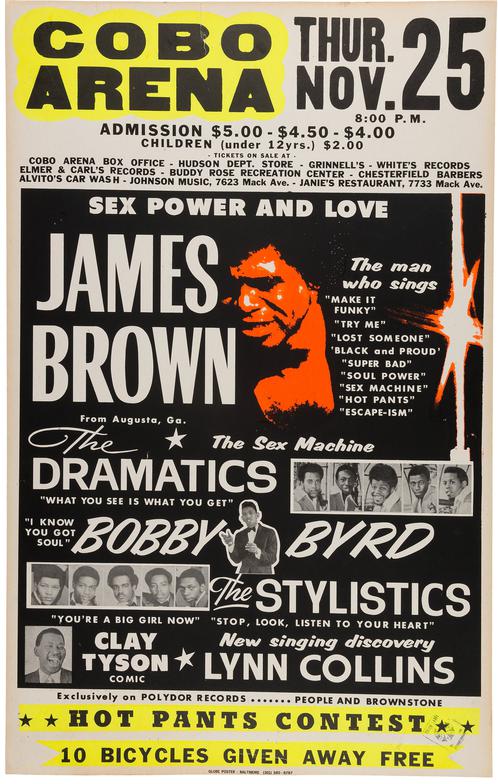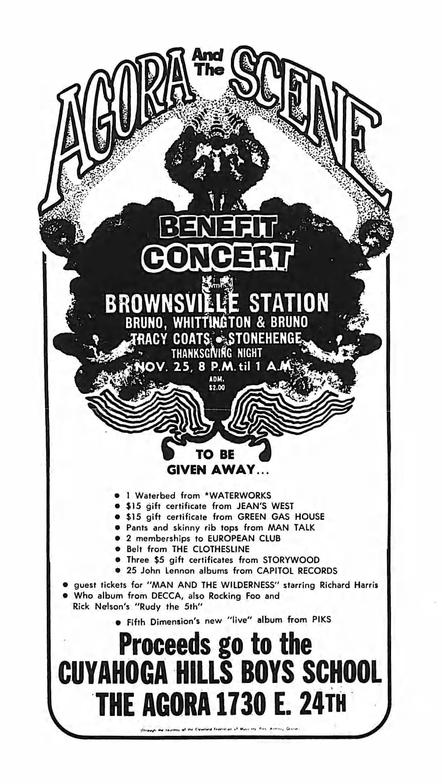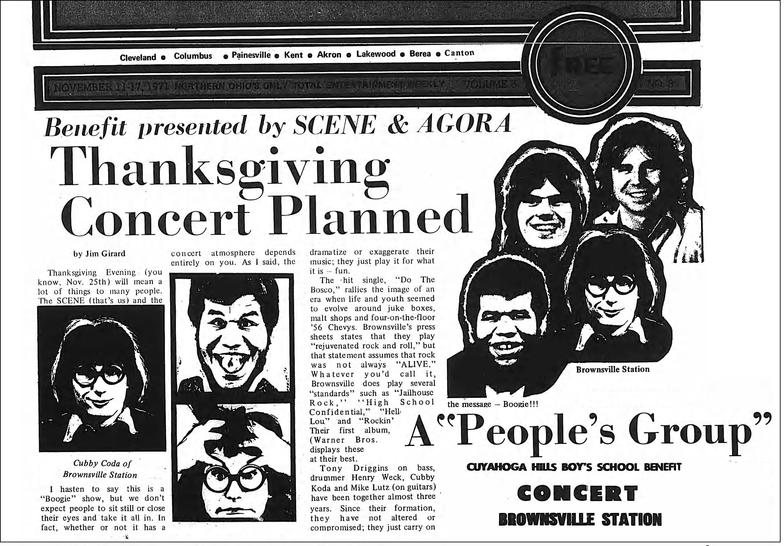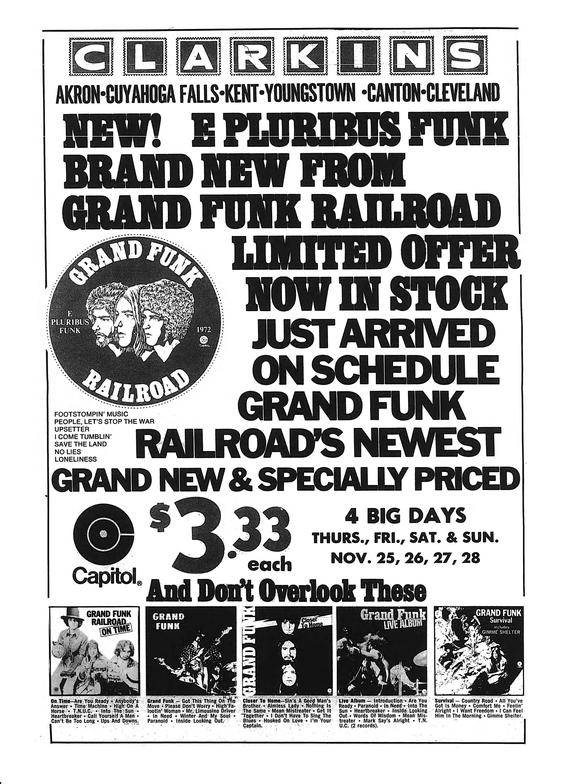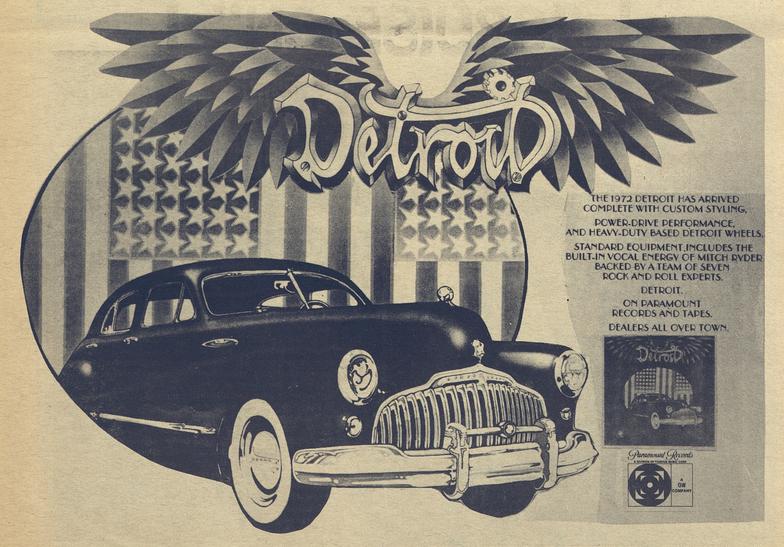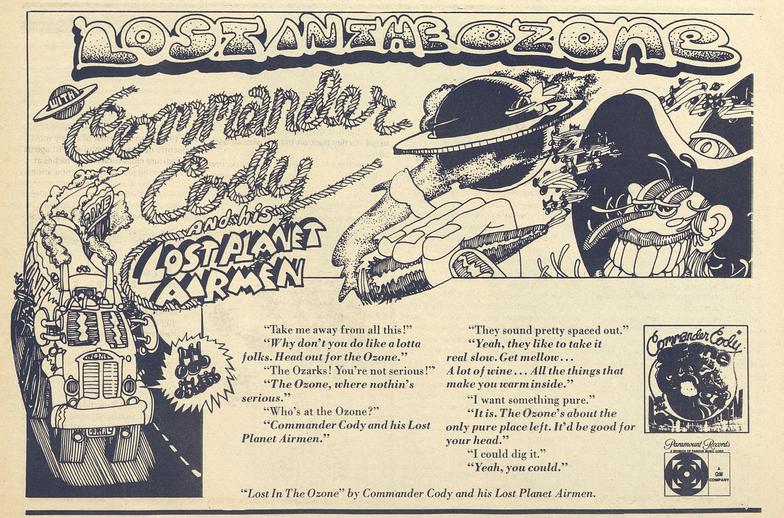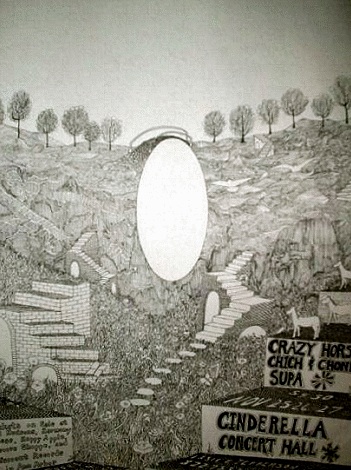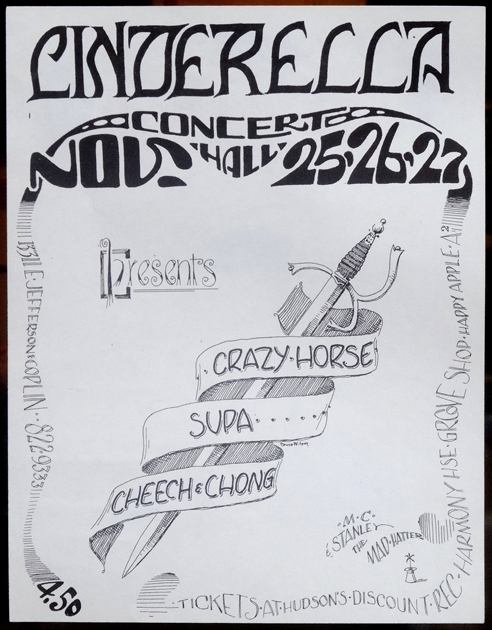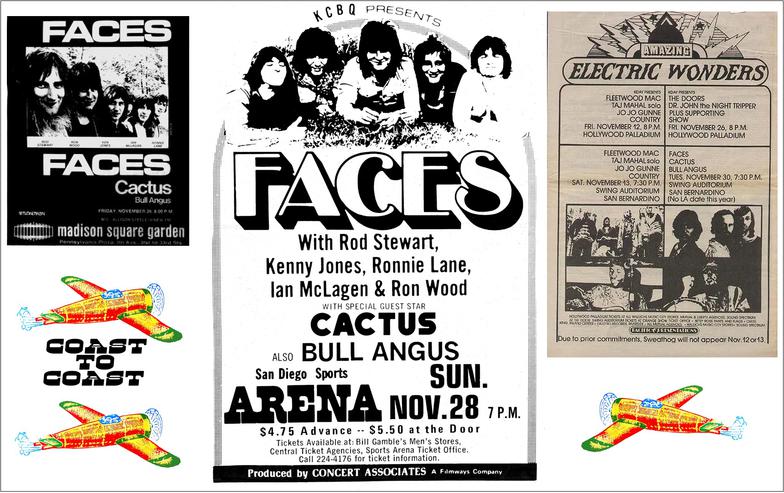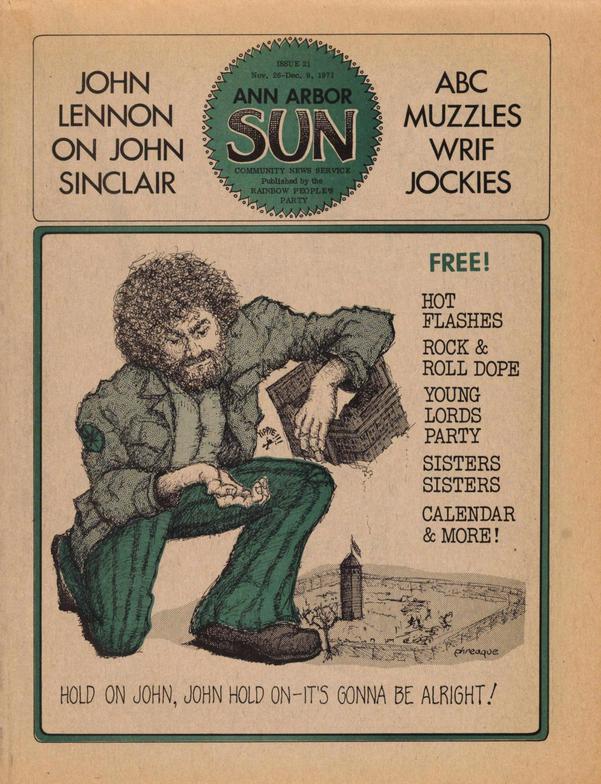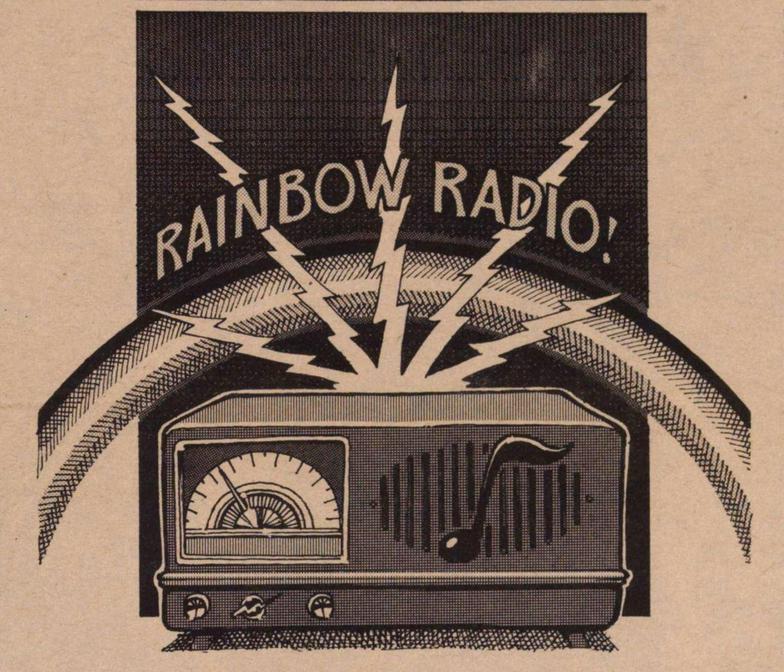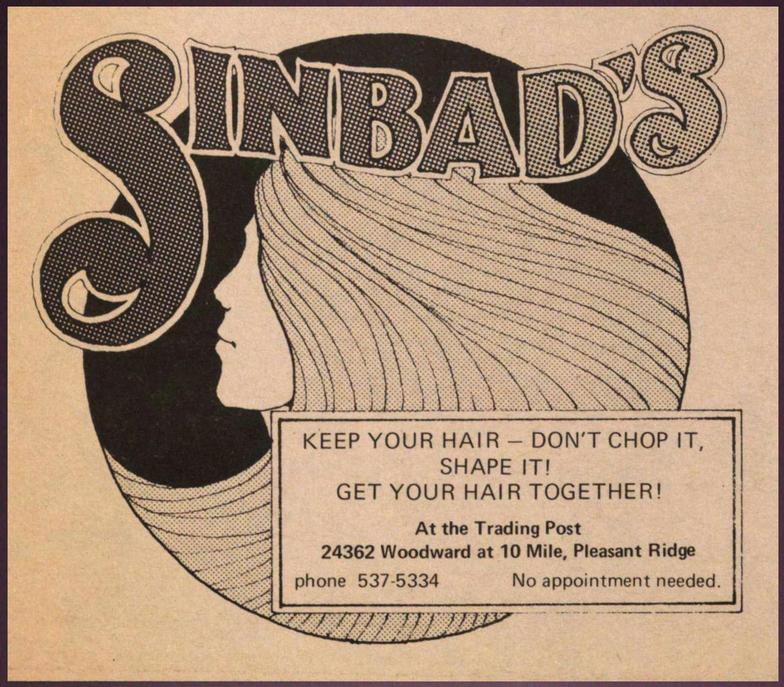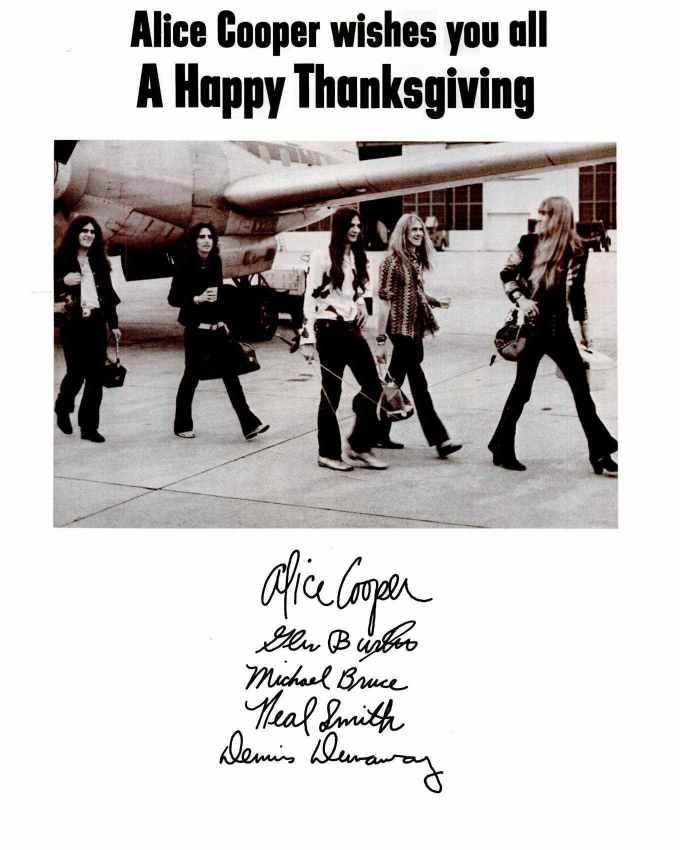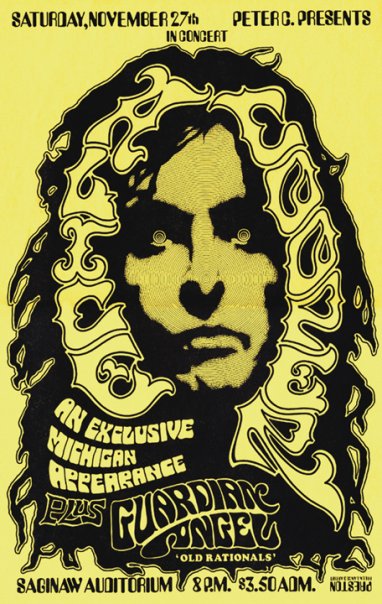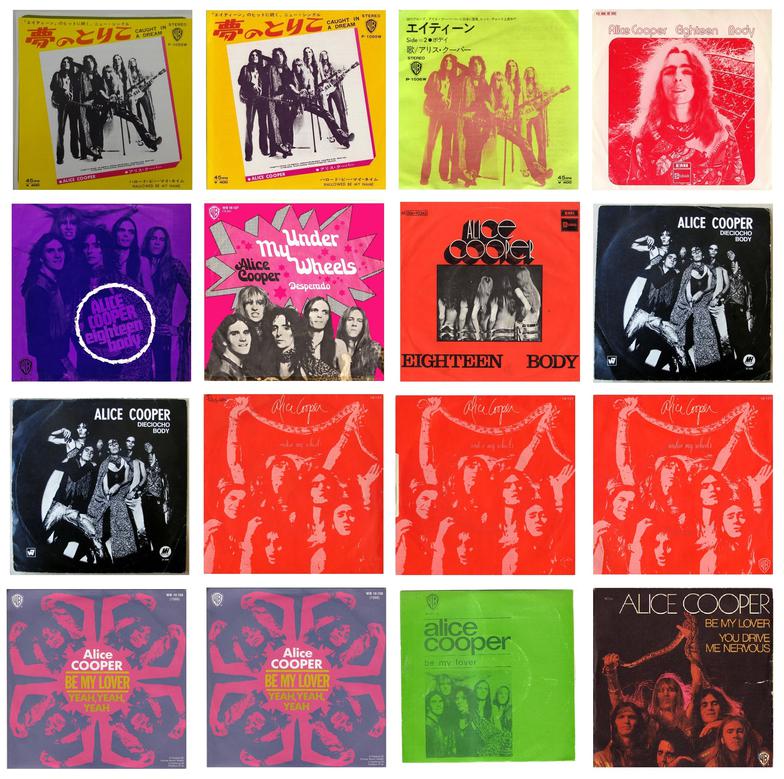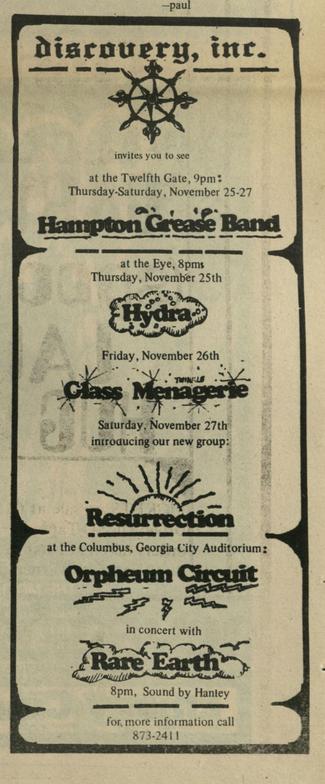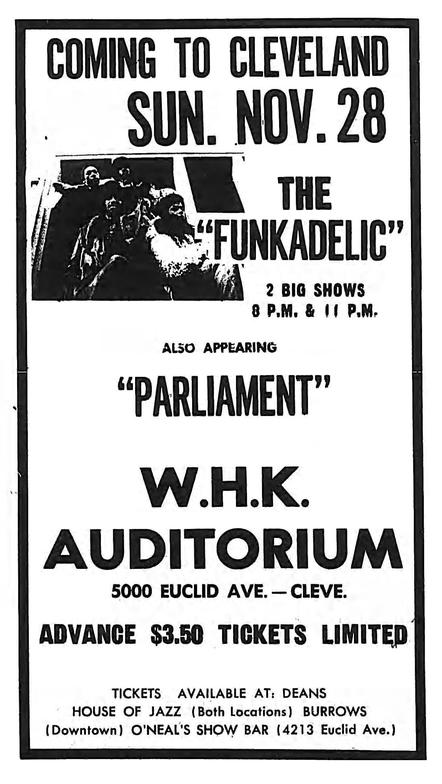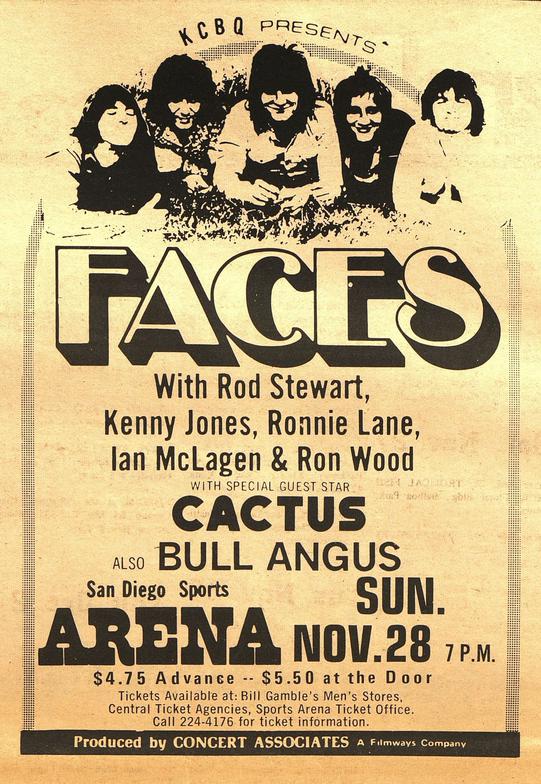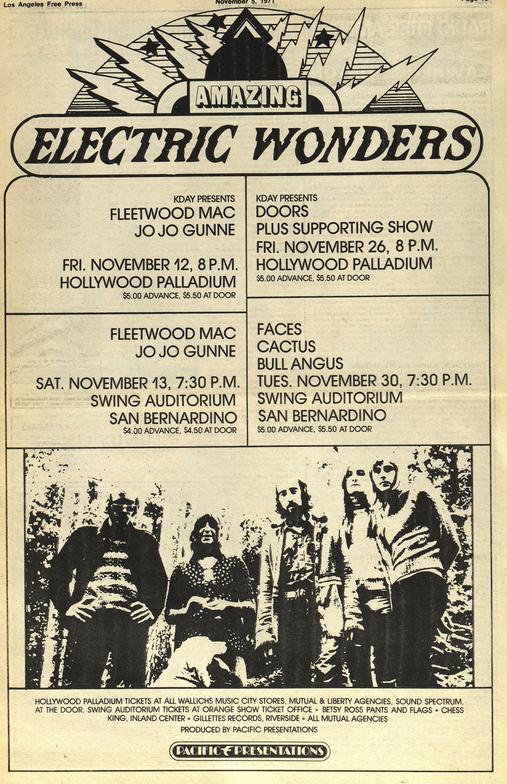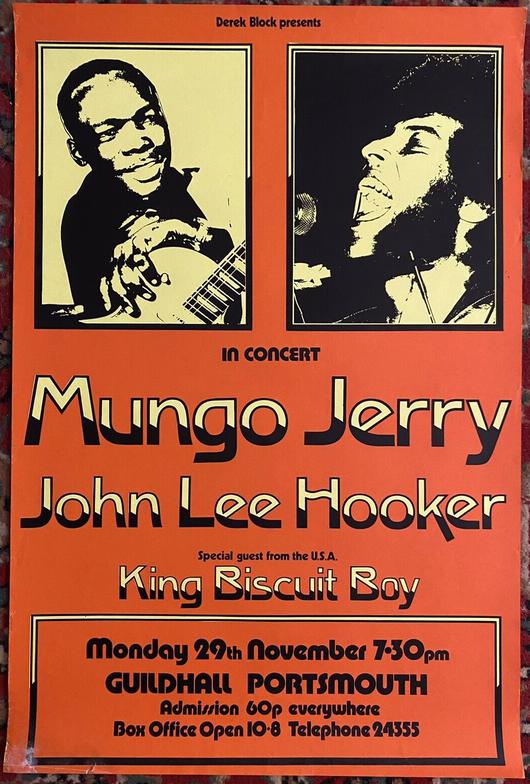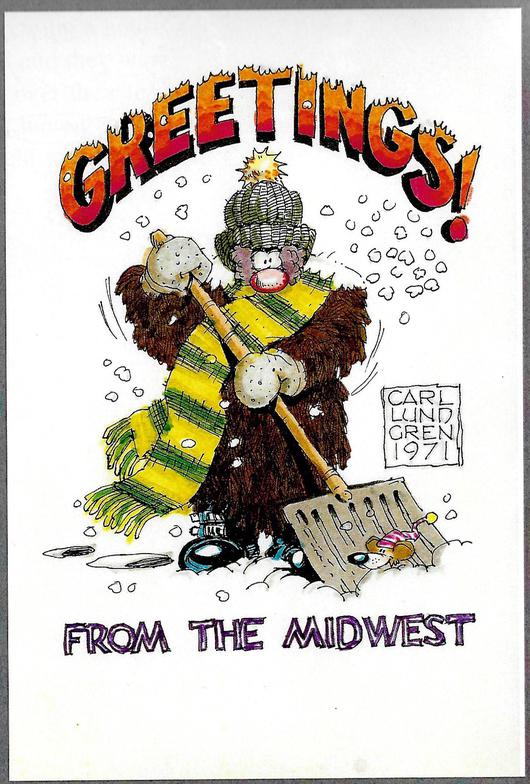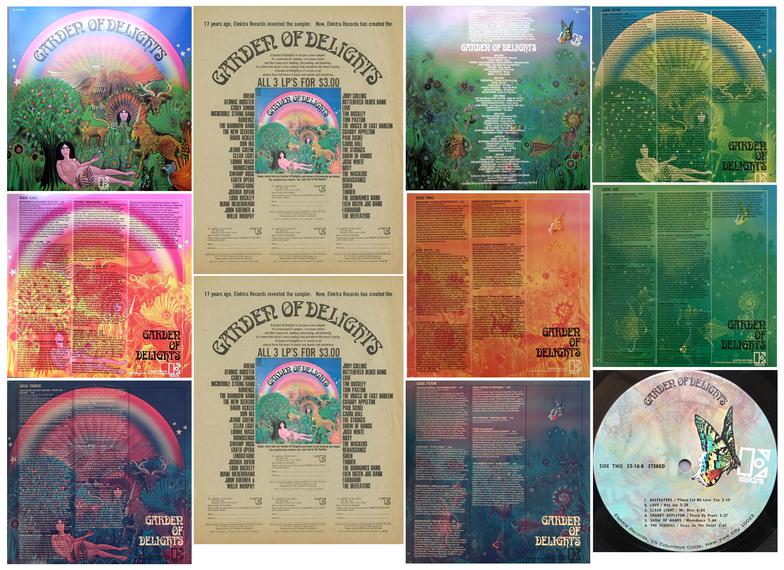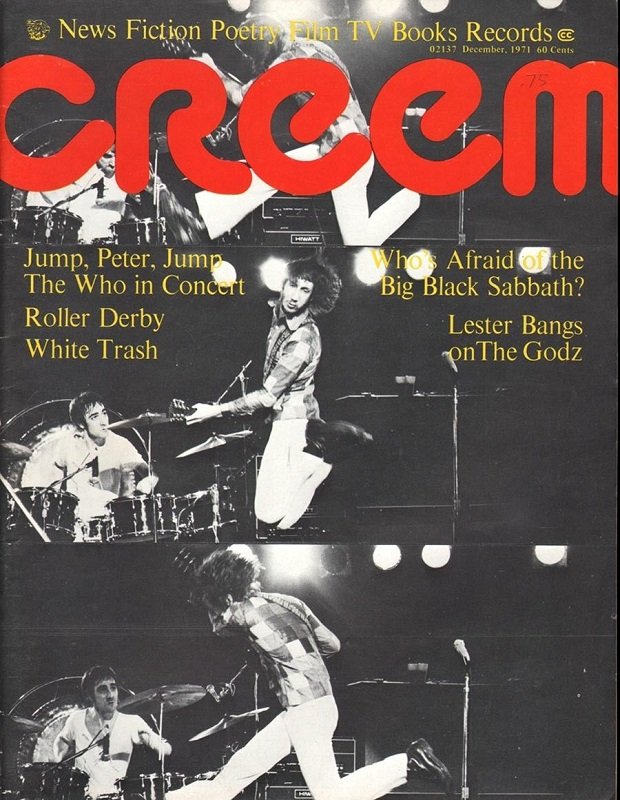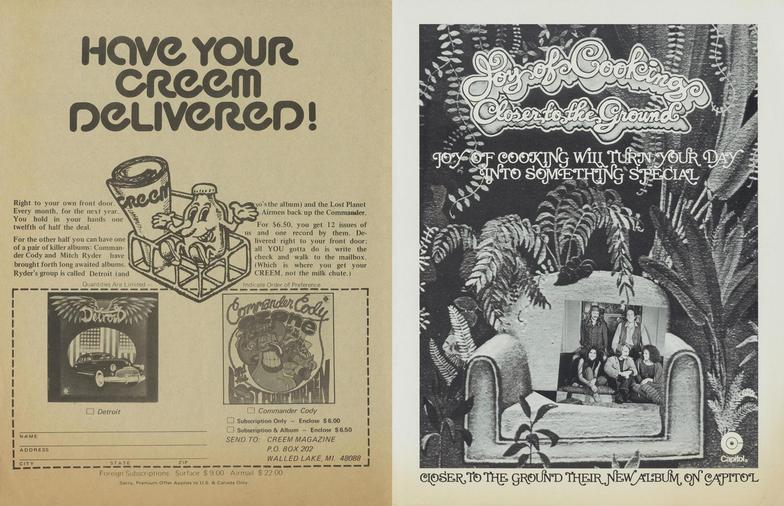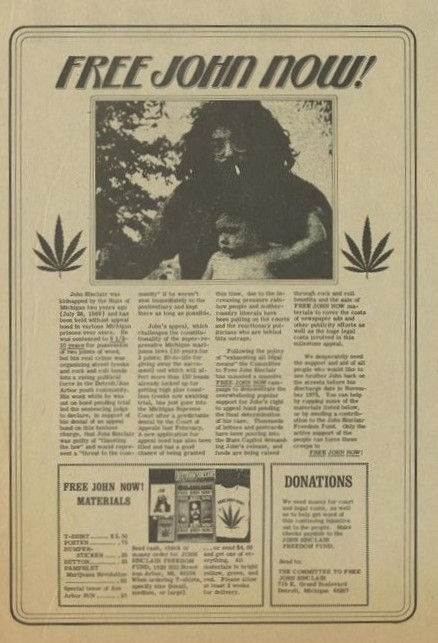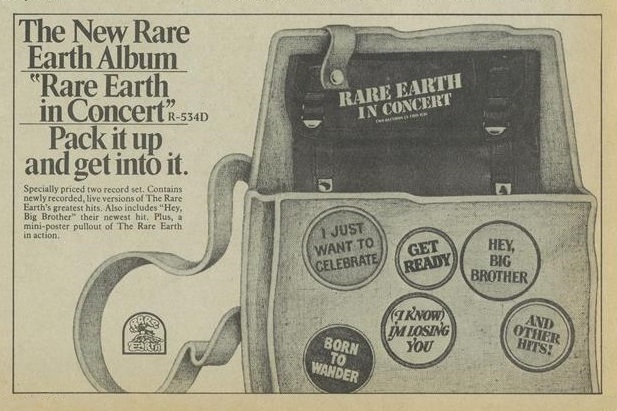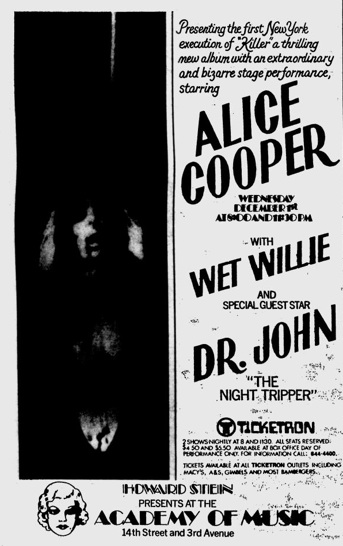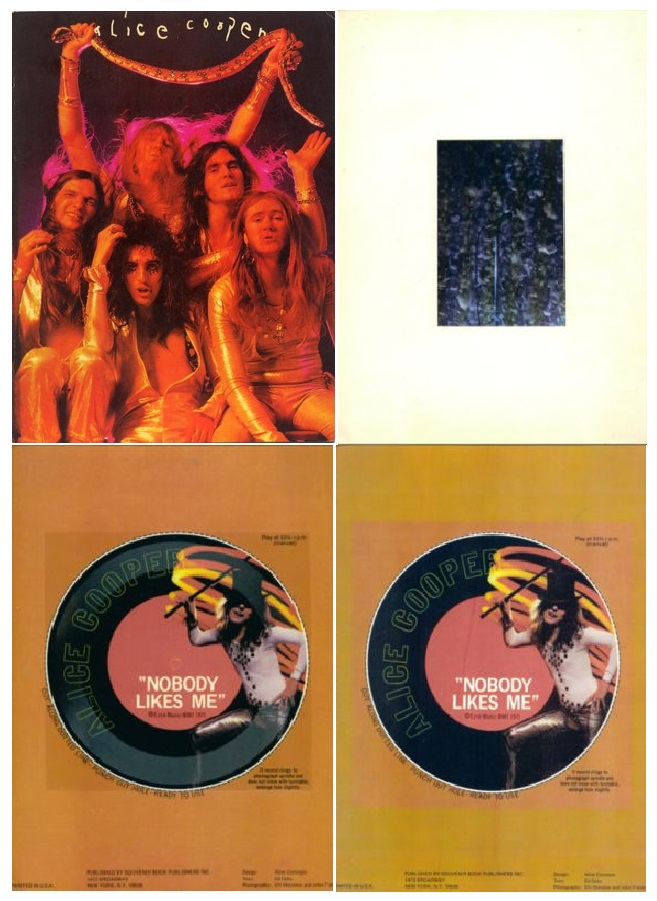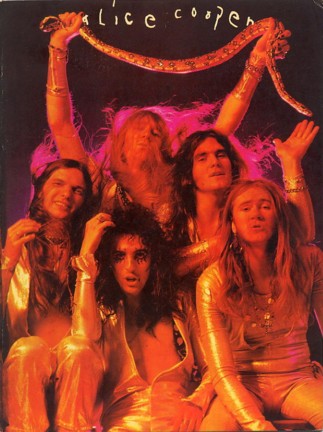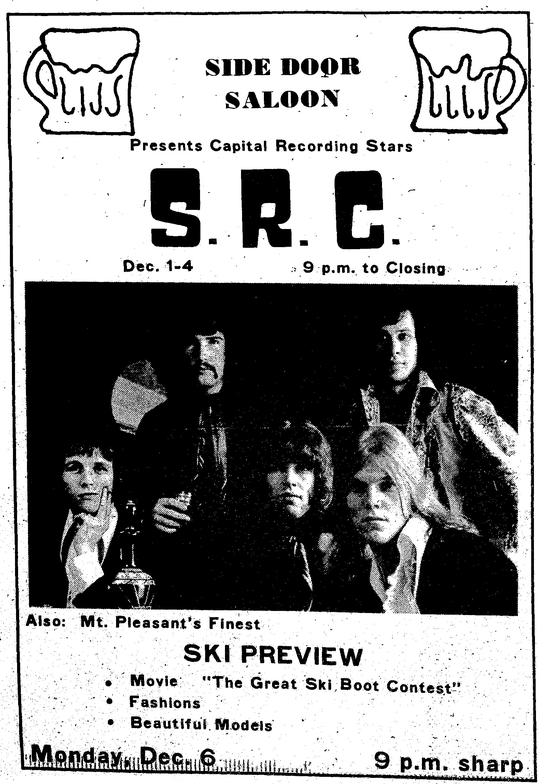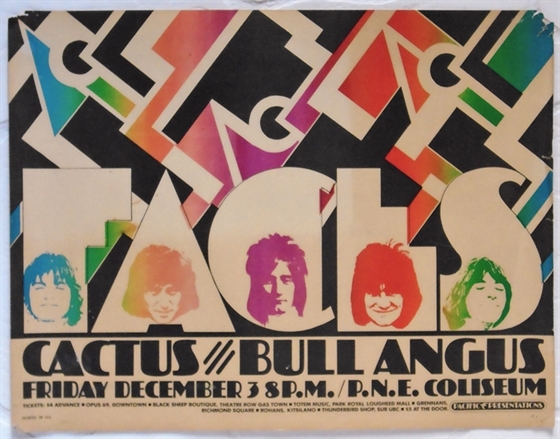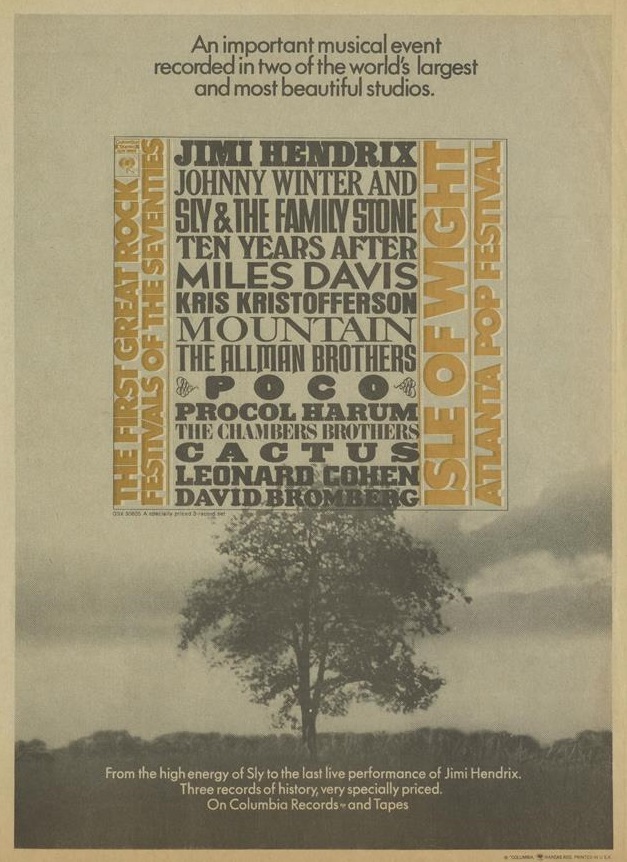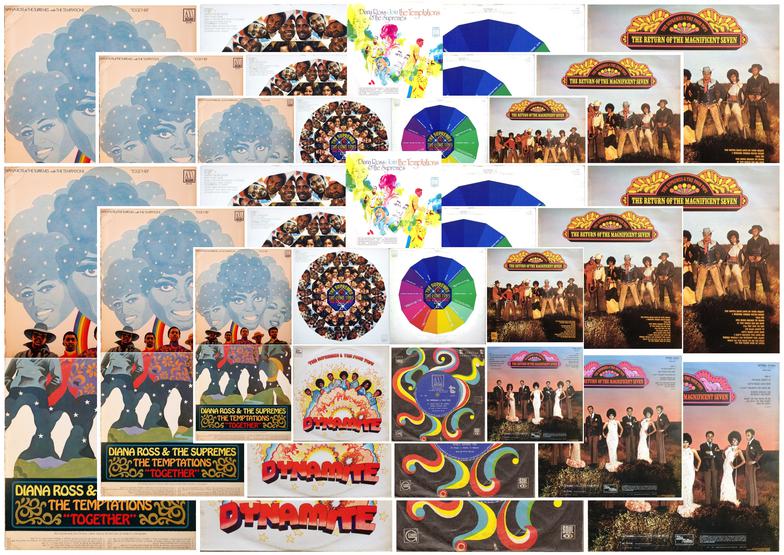Splatt Gallery
Double click here to add text.
Splatt Gallery's History of Michigan Concert Posters
Volume Seven - 1971 - Page Nineteen
***********************************************************
Poster by Gary Grimshaw for the Crisler Arena in Ann Arbor, Michigan, November 19-20, 1971, with Ike & Tina Turner and Shadowfax on the first night, and Jefferson Airplane and Hot Tuna on the second night.
You might notice the lack of any local bands playing as openers. The large promoters and record companies were insisting more regularly that another group on their labels open the shows to gain them exposure at relatively low cost, piggy-backing off the cost of the headliner’s tours.
It would be rare to see another show such as when national stars Sonny & Cher performed at the Masonic Temple in Detroit in 1965 and the supporting acts were FOUR local groups getting their first chances to play in front of thousands of people.
Handbill for the Crisler Arena (misspelled) in Ann Arbor, Michigan, November 19-20, 1971.
Newspaper ad for the Crisler Arena in Ann Arbor, Michigan, November 19-20, 1971. Jefferson Airplane on the 20th sold out quickly, while Ike & Tina Turner were competing with Donovan at the Bowen Fieldhouse in nearby Ypsilanti at Eastern Michigan University on the 19th.
Newspaper ad using the same photo that was used in Gary Grimshaw’s poster, for Ike & Tina Turner at Crisler Arena in Ann Arbor, Michigan, November 19, 1971.
Additional newspaper ads for Ike & Tina Tuner at the Crisler Arena in Ann Arbor, Michigan, November 19, 1971. Twin-billed with the Jefferson Airplane the following night, with tickets for both going on sale simultaneously, the Airplane show sold out quickly, while Ike & Tina required a bit more advertising.
Record company ad for The Doors with tour dates including a show at the Eastown Theater in Detroit, Michigan, November 20, 1971. It was their first album and first tour without Jim Morrison who had passed away in July.
Three nights before the Detroit show they had performed in Ottawa, Canada with The Wackers as an opening act. The lead singer of The Wackers, Mike Stull, had been considered as a replacement for Morrison even while Morrison was still alive but living in Paris. Later, Stull would join two of the ex-Doors, John Densmore and Robbie Krieger, to form the Butts Band. As for the third remaining member of The Doors, keyboardist Ray Manzarek, we will be seeing a lot of him, coming up.
A full-page back cover ad in the November 20, 1971 issue of Record World magazine for the debut album by Commander Cody And His Lost Planet Airmen, with artwork by Chris Frayne.
A Globe Poster for Tyrone Davis at Poppa’s Bag in Flint, Michigan on November 21, 1971. The poster, and even his band’s name, references Davis’ first big hit “Can I Change My Mind”, but he had even a bigger hit, "Turn Back the Hands of Time", in February 1970, well before the date of this poster, so it is odd that it is not referenced.
Jean Davis is Tyrone’s sister, she was also in the group Honey And The Bees, which became the the Ritchie Family (without Davis). Later, she will join the group Facts of Life, formed by Millie Jackson.
Tyrone Davis briefly lived with his father in Saginaw, Michigan.
Tyrone Davis - Turn Back the Hands of Time (1970)
https://www.youtube.com/watch?v=HfFZ2n2xvQE
An ad for the Baltimore Civic Center in Baltimore, Maryland with Mitch Ryder & Detroit (listed as “Mitch Rider & the Detroit Wheels”) opening for the James Gang on November 21, 1971.
Poster for the Fountain Street Church in Grand Rapids, Michigan, November 23, 1971. There were reports that the Alice Cooper band was on the same plane with John Mayall on the way to this gig and that they attended the show (to watch, not to perform). Alice and the band also attended the traditional after-show party at the home of Carolyn Heines.
Ad for Discount Records in East Lansing, Michigan by Terry Echterling in the November 23, 1971 issue of the State News newspaper. Echterling will produce more, increasingly fantastic, ads for Discount Records under the name of Jive Comix.
Indications are that the Amboy Dukes did indeed perform at Kemp Coliseum in Orlando, Florida on November 24, 1971, the date does appear on some timelines, but without the MC5, and the concert database has a show preview from a newspaper that describes Bo Diddley as the special guest, with the promise that Nugent would join Diddley “for a super jam encore”, but again with no mention of the MC5. The newspaper article also confirms the ticket prices and ticket sale locations that are on the poster.
We believe that the above poster is authentic, because of the amount of detail we don’t think it was just artist Tim Cagle’s “pipe dream”, but we also believe that, for some reason, the MC5 did not appear.
Interesting ad by an unknown artist named Shipps for the Parkside Lounge in Detroit, Michigan from the November 25, 1971 issue of the Fifth Estate newspaper. At first we thought that Chicken Lips was the name of a band, but it might be a menu item.
A Globe Poster for James Brown at the Cobo Arena in Detroit, Michigan on November 25, 1971. Local favorites, the Dramatics were also on the bill, along with Bobby Byrd, the man who discovered James Brown.
Bobby Byrd first met James Brown, both in their mid-teens in Georgia, when Byrd’s baseball team played a team from the local juvenile detention center, where Brown was serving time for robbery. Both of them had independently been drawn to singing, Byrd was a member of his church choir and played keyboards in a choir group that included his sister Sarah, called the Gospel Starlighters. Byrd and three of his friends also formed an R&B group, using the name the Avons and performing across the state line in South Carolina to avoid detection by the church elders who disapproved secular singing.
Brown had been singing in talent shows at an early age, and had formed a gospel quartet with fellow inmates in the juvenile detention center, where he was given the nickname “Music Box”, the first of many nicknames to come.
Byrd claims that he helped Brown get an early release, to which there is some dispute, but Brown did get released on parole in June 1952. Whether the Byrd family were Brown’s benefactors, or not, Brown joined Byrd’s band the Avons, who had changed their name to The Flames, initially in the role of the band’s drummer.
Brown was not content sitting behind a drum kit, he wanted to be the lead singer because lead singers attracted more attention from the women. His talent as a front man was undeniable, and to keep him from leaving the group, they acquiesced to Brown’s demand. The group performed at a club in Macon, Georgia that was owned by Little Richard’s manager Clint Brantley, who advised the group to add the word “Famous” to their name and arranged for the group to record a demo of a song written by Byrd and Johnny Taylor, Brown’s friend from the juvenile detention center, who had also joined the group, called “Please, Please, Please”.
The song became a regional hit and was picked up by Federal Records which became a Top Ten hit on the R&B charts, selling between one to three million copies, but because it was issued as “James Brown with the Famous Flames” the rest of the group got pissed and quit en masse. Eventually, Brown asked Byrd to come back and reform the Famous Flames, this time as backing vocalists and dancers since Brown had assembled an instrumental backing group. Because of the record companies inconsistent crediting practices, the Famous Flames were often thought of as James Brown’s “band” although they were a vocal group, no longer playing instruments.
The Famous Flames performed and recorded with James Brown until 1968 when they parted over the typical money issues. Two years later, Brown rehired Byrd and tasked him with coming up with a new band of musicians, since his current band had quit over the typical money issues. Without so much as an audition, Byrd hired a young Cincinnati band called the Pacemakers, which included bassist Bootsy Collins and his brother Catfish on guitar. Brown renamed the band the J.B.’s, and although they only lasted less than a year, they performed on some of Brown's most intense funk recordings, including "Get Up (I Feel Like Being a) Sex Machine", "Bewildered (1970)", "Super Bad", "Soul Power", "Talkin' Loud and Sayin' Nothing", and others.
By the time of this show at Cobo, the “original” J.B.’s were long gone, the Collins brothers returned to Cincinnati to form the band the House Guests, their final prelude before joining Parliament Funkadelic, but Bobby Byrd was still part of the James Brown show, as a solo opening act with a number of records released, including the one noted on this poster, “I Know You Got Soul”.
Bobby Byrd – I Know You Got Soul (1971)
https://www.youtube.com/watch?v=ny-g9dYVP74
Poster/ad with Brownsville Station headlining a benefit show for the Cuyahoga Hills Boys School at the Agora Theatre in Cleveland, Ohio on Thanksgiving night, November 25, 1971.
Show Preview for Brownsville Station headlining a benefit show for the Cuyahoga Hills Boys School at the Agora Theatre in Cleveland, Ohio on Thanksgiving night, November 25, 1971.
A full-page record store ad for Grand Funk Railroad’s “E Pluribus Funk” album in the November 25, 1971 issue of the Northeastern Ohio Scene magazine.
Stanley Mouse designed the band’s logo, album cover, and posters for the self-titled, one and only, album by the band Detroit. This ad, which ran in the November 25, 1971 edition of the Fifth Estate newspaper in Detroit, Michigan, reads:
“The 1972 Detroit has arrived complete with custom styling. Power-drive performance, and heavy-duty based Detroit Wheels. Standard equipment includes the built-in vocal energy of Mitch Ryder backed by a team of seven Rock and Roll experts.”
Ad designed by Chris Frayne (Ozone) for the debut album by his brother’s band Commander Cody & his Lost Planet Airmen which ran in the November 25, 1971 edition of the Fifth Estate newspaper in Detroit, Michigan.
Two half-page ads in the November 25, 1971 issue of the San Francisco Good Times newspaper for two of the finest debut albums by Michigan artists. Detroit’s self-titled album featured artwork by Stanley Mouse, while “Lost in the Ozone’ by Commander Cody & His Lost Planet Airmen featured artwork by the Commander’s brother Chris Frayne.
Very interesting and unique poster by an unknown artist for the Cinderella Ballroom in Detroit, Michigan, November 25-27, 1971.
“Supa” is listed in the database as a Michigan group, more likely, it was the group formed by Richie Supa, a New York singer/songwriter who released two albums under the name Supa in 1971 and 1972, and two albums under his full name Richard Supa in 1976 and 1978. He is a “household name” in the Northeast, known for his early band, The Rich Kids, his role in the Broadway production of “Hair”, and most famously for his close friendship and work with the bands Aerosmith and Bon Jovi.
These three nights at the Cinderella, performing with Cheech & Chong and Crazy Horse appear to be Supa’s only Michigan appearances, although The Detroit Free Press reported that Supa was scheduled to open for John Mayall, along with Guardian Angel (“an Ann Arbor group”) at the Cinderella on November 6th.
Supa – Stoned County (1971)
https://www.youtube.com/watch?v=FJbmeRNN4m8
A second poster by another unknown artist for the Cinderella Ballroom in Detroit, Michigan, November 25-27, 1971. With M.C. Stanley the Mad Hatter.
The Faces would later use the title “Coast to Coast” for their 1973 tour and the resulting live album, we’ve cribbed the logo since these shows epitomize the concept with a show at the Madison Square Garden in New York City on November 26, 1971 and two days later at the San Diego Arena in California on the 28th. Also shown is the poster for San Bernardino, California on November 30, the common denominator for all three shows is having Cactus, and Bull Angus, as the openers.
The front cover of the November 26, 1971 issue of the Ann Arbor SUN newspaper, with an illustration signed by “phreaque”, it looks like it could be the work of Mike Brady.
Gary Grimshaw illustration for the Rainbow Radio section of the November 26, 1971 issue of the Ann Arbor SUN newspaper.
An ad by Gary Grimshaw in the November 26, 1971 issue of the Ann Arbor SUN newspaper for Sinbad’s hair salon in the Trading Post hippie mall in Pleasant Ridge, Michigan.
Alice Cooper with Thanksgiving holiday greetings to their fans in this full-page ad that ran in the November 27, 1971 issue of Billboard magazine.
Poster by Dennis Preston, and one of our all-time favorite Alice Cooper posters, for the Saginaw Auditorium in Saginaw, Michigan, November 27, 1971, with openers Guardian Angel (“Old Rationals”).
This was a “warm-up” show for the band before hitting the road with a new bag of tricks that included a gallows hanging followed by an encore performance in top-hat and tails. After returning from their first European tour in the beginning of November, the band had found a house in Greenwich, Connecticut that would become their new home. The show at the Saginaw Auditorium would be the last time they would play a venue this small in Michigan.
Here’s a clip recorded at some point along the tour, with the show-ending bit that the Saginaw Auditorium audience saw for the first time. They loved it.
Alice Cooper – Live footage (1971)
https://www.youtube.com/watch?v=-nK3L5fOWnE
Around the end of November 1971, the Alice Cooper band left Michigan and moved into a 42 room Galesi Estate mansion in Greenwich, Connecticut, becoming neighbors with the actress Bette Davis. Shown above are the picture sleeve singles released by the band during their time living in Michigan, from August/September 1970 through 1971. Technically, "Be My Lover" was released in January 1972, but it was a single from the “Killer” album.
Although the band lived in Michigan for probably less than a year-and-a-half, Alice Cooper became indelibly linked to Detroit. Yes, Vincent Damon Furnier was born in Detroit, but his family moved to warmer, dryer climates when he was only 12.
Although the band’s time in Michigan was relatively short, it was impactful, the Grande Ballroom era was sputtering to an end, Alice never performed there but they were better suited anyways for the seedier Eastown Theater which was just ascending. They landed in the middle of a hot local scene that included the MC5, the Stooges, Detroit with Mitch Ryder, the Amboy Dukes, Frost, SRC, Third Power, Brownsville Station and Funkadelic. We’ve described many of the examples of Alice Cooper’s instant love of Detroit and Detroit’s nearly-instant reciprocal love for Alice.
More recently, Alice released an EP in 2019 called “Breadcrumbs” that featured Detroit musicians such as Johnny “Bee” Badanjek, Mark Farner, Wayne Kramer, Mick Collins , Paul Randolph and Shorty Long. And most recently, Alice Cooper’s next, upcoming album to be released about three weeks from now (February 2021) will be called “Detroit Stories”, again featuring a stellar cast of Detroit musicians and some promising covers of “Sister Anne” and “East Side Story”.
And finally of course, it was during their time in Michigan that they recorded and released their two break-out albums “Love It To Death” and “Killer”. The following years would take them to a pinnacle of success achieved by very few and which had to be completely inconceivable even when Vince Furnier wrote in his high school yearbook that his ambition was to be "A million record seller”, or when the band first heard themselves on the radio as they drove through the streets of Detroit listening to “Eighteen” on CKLW.
An ad with Rare Earth in Atlanta, Georgia on November 27, 1971.
The genius of George Clinton on display, no doubt the promoter thought he was getting two groups, which he did, in a way. An ad for “The Funkadelic” in Cleveland, Ohio on November 28, 1971, and “Also Appearing Parliament”.
Poster/full-page ad with Cactus opening for the Faces in San Diego, California on November 28, 1971.
Poster/full-page ad with Cactus opening for the Faces in San Bernardino, California on November 29, 1971.
Poster for John Lee Hooker in the South of England with Mungo Jerry and King Biscuit Boy on November 29, 1971.
In the fall of 1971, Carl Lundgren returned to Detroit, leaving his steady, but stifling, day job at the paper company in California. This is a card that he sent to his former employer as Lundgren endured a particularly cold Michigan winter. In the spring of 1972, Lundgren will move to New York to further his career in fantasy fiction art.
Elektra Records released a 3-LP sampler album called “Garden of Delights” in November 1971, each disc came in its own sleeve, the package art was by Hamtramck, Michigan native Gene Szafran. An artist, illustrator, and sculptor, he was known for illustrations in magazines including Playboy and Fortune and cover art for science fiction books published by Bantam and Ballantine during the 1960s to 1980s, including a series of Signet paperbacks of Robert A. Heinlein's work.
The set included one track by the Stooges, “Down On The Street”, the opening track on the Stooges’ second album “Fun House”. The video linked below syncs the song to clips from the 1998 Johnny Depp movie “Fear and Loathing in Las Vegas”.
The Stooges – Down On The Street (1970)
https://www.youtube.com/watch?v=1L3xB4wHIA0
The December 1971 issue of CREEM magazine. It was the seventh issue of the year, a transition year for the magazine, that saw a brief three-issue attempt at a bound tabloid format in the first six months before finally settling on the magazine format, and CREEM logo, that would be permanent, starting with the September issue. Now in steady monthly publication the December issue was the fourth in the final format.
The subscription page from the December 1971 issue of CREEM magazine, with the “Michigan twins”, albums by Detroit and Commander Cody & His Lost Planet Airmen that have been seen nationally promoted, as premiums.
A full-page “Free John Now!” ad in the December 1971 issue of CREEM magazine. The steadfast campaign since Sinclair’s incarceration in July 1969 was going to finally pay off soon.
A Rare Earth Records ad for “Rare Earth in Concert” by Rare Earth, a double-album released in December 1971, their first live album and fifth album overall. Full album available for listening here:
Rare Earth – Rare Earth in Concert (live album) (1971)
https://www.youtube.com/watch?v=mxQKiuDnI04&list=PLIDIwdtMxfrv05AyVvicT6ohlITKbdd10
Poster for Alice Cooper at the Academy of Music in New York City on December 1, 1971, with Wet Willie and Dr. John, “the first New York execution of Killer”.
The front cover and the three different back covers of the tour program for Alice Cooper’s Killer tour which officially kicked off at the Academy of Music in New York City on December 1, 1971 (following a warm-up show in Saginaw, Michigan five days earlier).
The first version had an abstract photo on the back cover, followed by a version that included a flexi disc, and a version that looked like the flexi disc but was not one.
An excellent site on all Alice Cooper tour programs can be found here:
https://www.alicecoopertourprograms.com/
Newspaper ad for SRC at the Side Door Saloon, formerly the Sound Lounge, in Mount Pleasant, Michigan, December 1-4, 1971.
Nice poster by an unknown artist with Cactus opening for the Faces in Vancouver, British Columbia, Canada on December 3, 1971.
An illustrated ticket for Commander Cody & His Lost Planet Airmen in Modesto, California on December 3, 1971.
Poster by Gary Grimshaw, for Little Richard and Rockin’ Foo at the Cinderella Ballroom in Detroit, December 4, 1971.
Volume Seven - 1971 - continues - HERE
A full-page Columbia Records ad in the November 1971 issue of CREEM magazine for the album “The First Great Rock Festivals Of The Seventies”, a three-record set that included the track “No Need To Worry / Parchman Farm” by Cactus recorded at the Isle of Wight Festival in August 1970.
Released in December 1971, the album “Dynamite” was third and final collaborative album between the Supremes and the Four Tops, following 1970’s “The Magnificent 7”, and “The Return of the Magnificent Seven” in July 1971. The collaborative format had started with combining the Supremes with the Temptations which yielded two albums and a TV special in 1968 and 1969.


